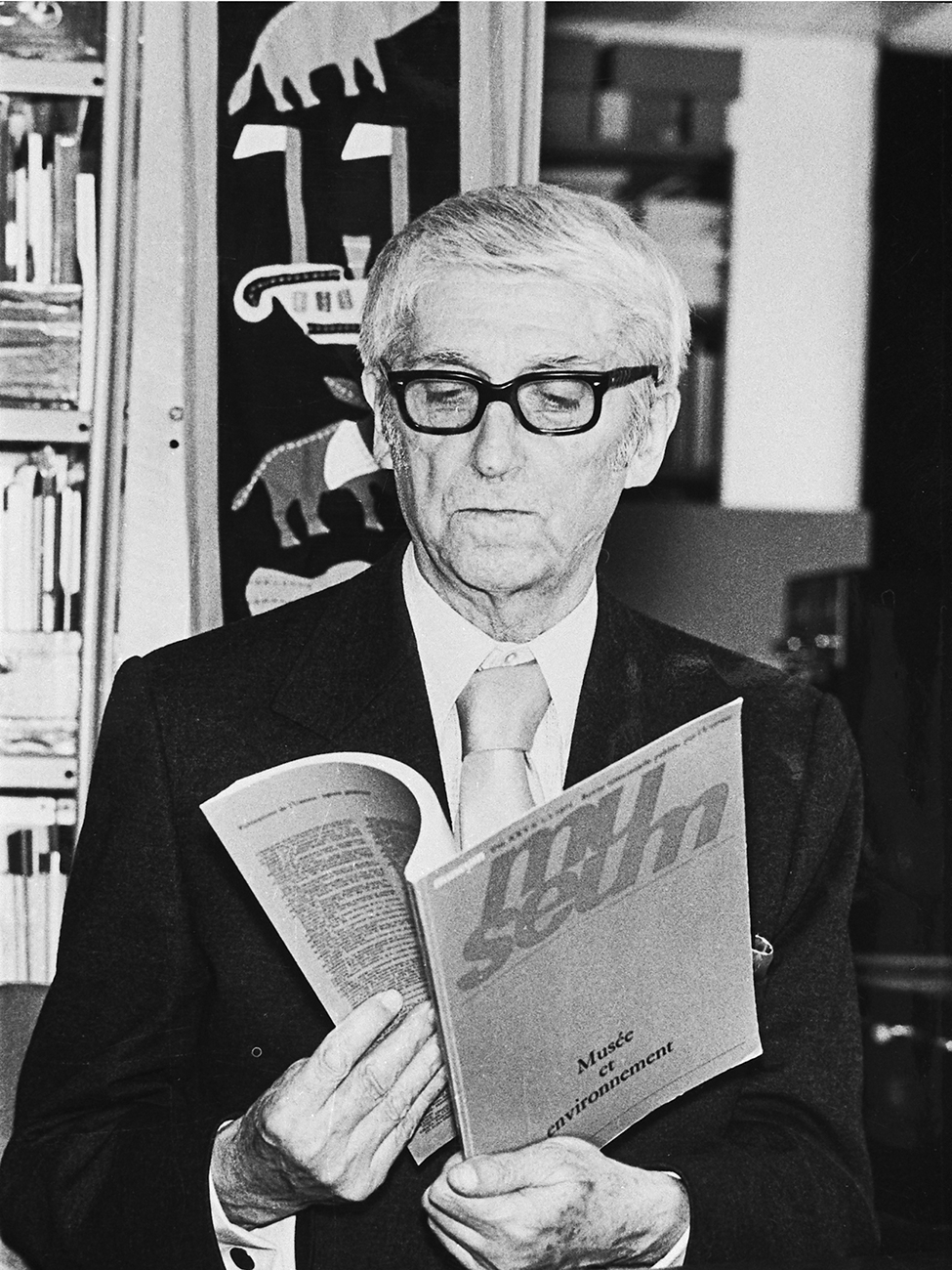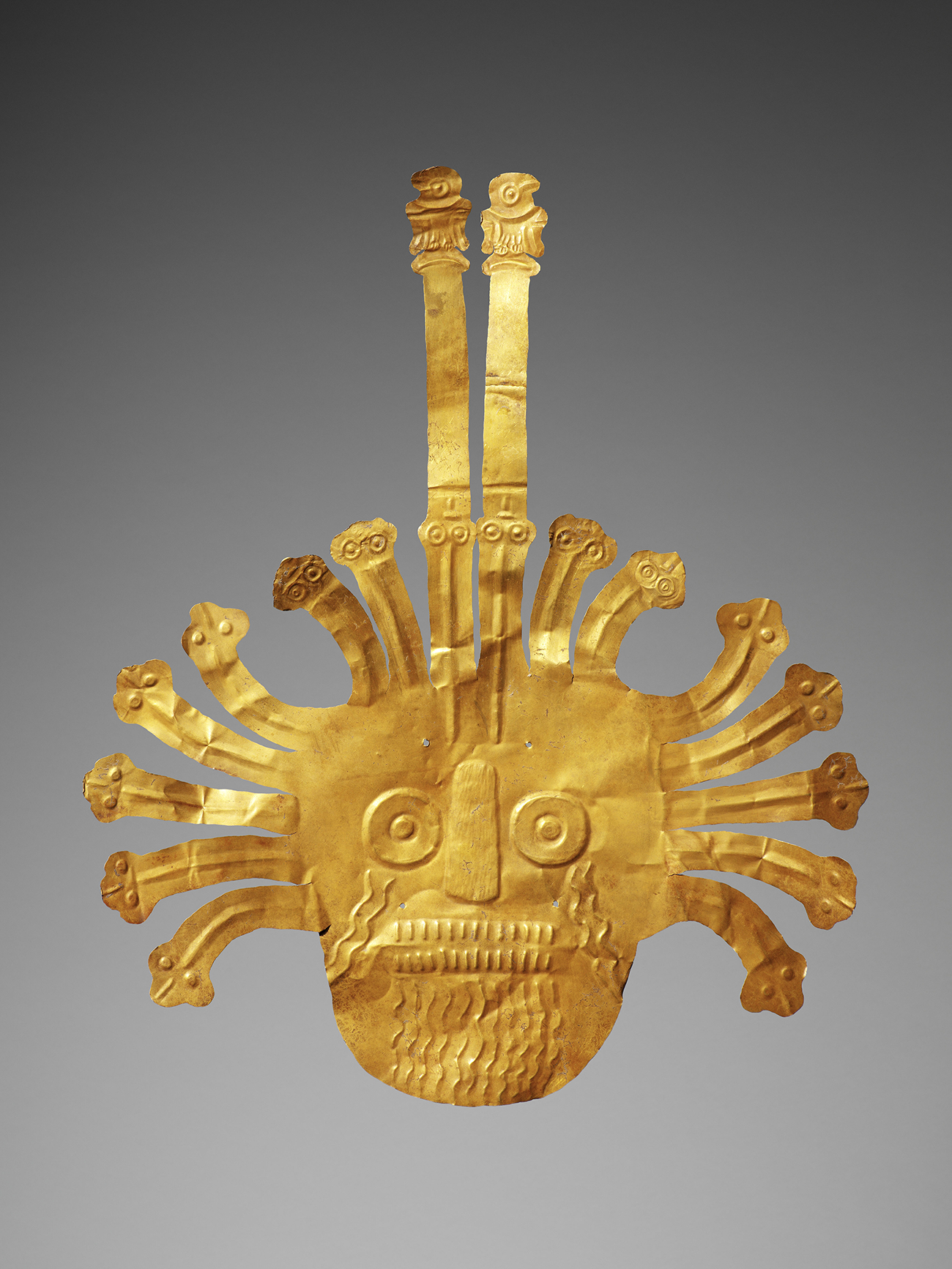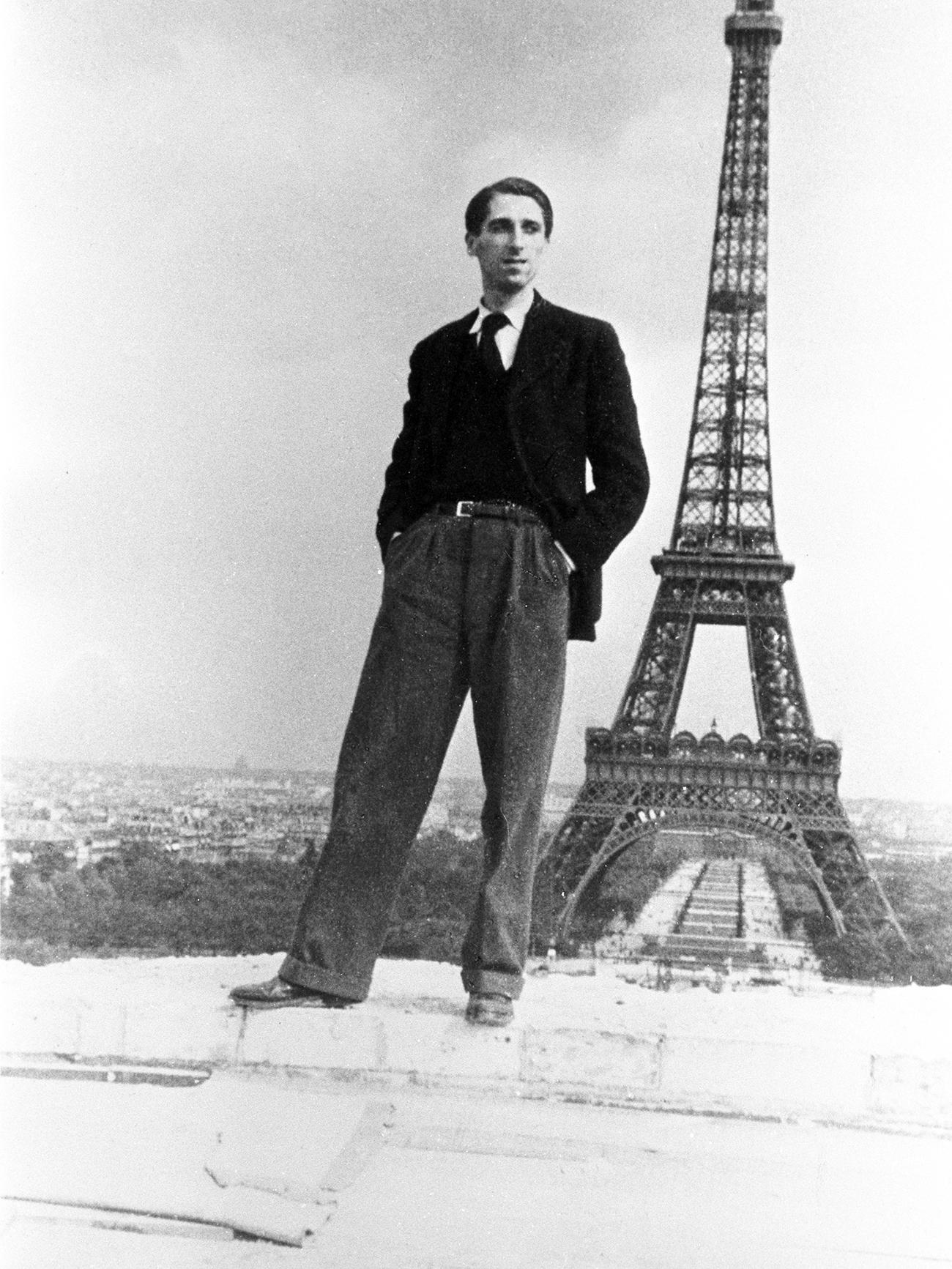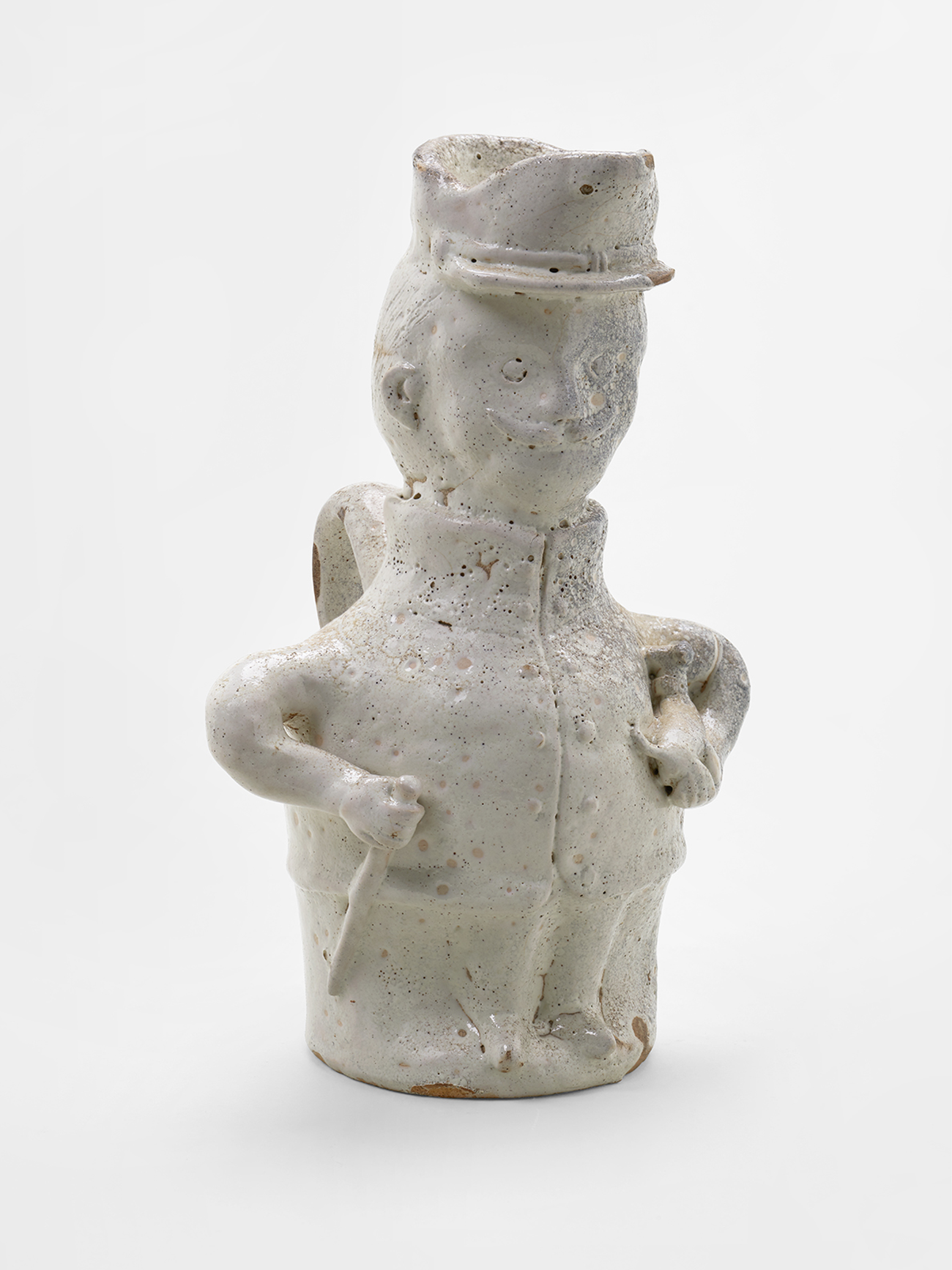Georges Henri Rivière
Seeing is understanding





The 20th century was the time that experienced the development of museums and a questioning as to their purpose, of their reinvention and often of their resource allocation. With its collections sourced from the musée du Trocadéro, the musée de l’Homme and the musée des Arts et Traditions populaires, together with the contemporary questions it seeks to answer, the Mucem can be seen to embody an essential part of this evolution thanks to objects and ideas passed down from one man – Georges Henri Rivière (1897-1985).
Using his life as a line of construction for this story, the exhibition sets out the breadth of his vision of a world in the throes of transformation. It first presents an intimate portrait of the man – his origins, training, and cultural and artistic milieu – up to the point when, with all those he involves thereafter, he brings about a veritable revolution of museums.
His father was middle-class and his mother had a peasant background. He set himself on a career in music, but discovered through his uncle, Henri Rivière, one of the promoters of the Chat noir, the world of collectors and the erudite, how to “see” as an artist, and a friendship with Degas, the remarkable engraver and photographer. His sister, Thérèse Rivière, followed him to the Trocadéro, becoming upon her very first assignment in the Aures region of Algeria with Germaine Tillion an excellent ethnologist in her own right, whose career was cut short by mental illness.
Rivière worked as a musician and was curious about everything that the Roaring Twenties were bringing – from Modern Art to Jazz, fashion, photography, cinema and music halls. A journalist and polemicist who was in involved with reviews for the Cahiers d’art et Documents, he established himself at the Trocadéro Museum, after having produced in 1928 the first exhibition on “The Ancient Arts of America”. An indefatigable advocate and organiser of shock events, he took inspiration from museums abroad to plan around his ethnographic collections, and as an instrument for social and scientific sharing, the musée de l’Homme, which opened under the Front populaire during the Exposition internationale in 1937.
Rivière understands that beyond ethnology and exotic cultures, one needs to be interested in the upheaval experienced by France’s regional rural and factory worker cultures, creating in the same year of 1937 a “musée des Arts et Traditions populaires”. Maintaining close relationships with artists, such as Picasso and Léger, and their patrons, Rivière explored and analysed craft know-hows and all aspects of popular invention, including imagery and circus arts. He reveals the strengths, beauty, humour and potential of what was thought was a bygone era.
The exhibition aims to draw a portrait of the man, Georges Henri Rivière, who embodies in himself alone some of the most significant aspects of 20th century culture. It presents some 600 documents and items (works of Modern Art, popular arts objects, ethnographic objects, photos, sculptures, drawings, audiovisual archives, etc.) sourced from the Centre Pompidou, the musée du quai Branly-Jacques Chirac, the musée d’Orsay, the Archives nationales and principally from the Mucem, which preserves the diverse and important collections of the musée des Arts et Traditions populaires.
—Curator: Germain Viatte, head of conservation for Heritage
—Deputy curator: Marie-Charlotte Calafat, deputy head of the collections department of the Mucem and head of the documents section and of the Museum History section
—Scenography: Olivier Bedu, Struc Archi
With personal thanks from the exhibition curators to:
—Jean-François Leroux-Dhuys, for his tireless support throughout and without whom this exhibition could not have taken place.
—Yasha David, who supported us with our initial thoughts on the organisation and presentation of this exhibition.
The title of the exhibition is inspired by a poem by Paul Eluard: “Seeing is understanding, judge, transform, imagine, forget or to forget oneself, to
be or to disappear.” Published in Donner à voir (Giving to see), Paris, Gallimard,1939, coll. “Poésie / Gallimard”. Reprint in 1978
Museum view
Museum view of the exhibition « Georges Henri Rivière. Seeing is understanding »
© Notoryou
Discover full screen
Interview with Germain Viatte and Marie-Charlotte Calafat, curators of the exhibition
The 20th century was the time that experienced the development of museums and a questioning as to their purpose, of their reinvention and often of their resource allocation. With its collections sourced from the musée du Trocadéro, the musée de l’Homme and the musée des Arts et Traditions populaires, together with the contemporary questions it seeks to answer, the Mucem can be seen to embody an essential part of this evolution thanks to objects and ideas passed down from one man – Georges Henri Rivière (1897-1985).
Using his life as a line of construction for this story, the exhibition sets out the breadth of his vision of a world in the throes of transformation. It first presents an intimate portrait of the man – his origins, training, and cultural and artistic milieu – up to the point when, with all those he involves thereafter, he brings about a veritable revolution of museums.
His father was middle-class and his mother had a peasant background. He set himself on a career in music, but discovered through his uncle, Henri Rivière, one of the promoters of the Chat noir, the world of collectors and the erudite, how to “see” as an artist, and a friendship with Degas, the remarkable engraver and photographer. His sister, Thérèse Rivière, followed him to the Trocadéro, becoming upon her very first assignment in the Aures region of Algeria with Germaine Tillion an excellent ethnologist in her own right, whose career was cut short by mental illness.
Rivière worked as a musician and was curious about everything that the Roaring Twenties were bringing – from Modern Art to Jazz, fashion, photography, cinema and music halls. A journalist and polemicist who was in involved with reviews for the Cahiers d’art et Documents, he established himself at the Trocadéro Museum, after having produced in 1928 the first exhibition on “The Ancient Arts of America”. An indefatigable advocate and organiser of shock events, he took inspiration from museums abroad to plan around his ethnographic collections, and as an instrument for social and scientific sharing, the musée de l’Homme, which opened under the Front populaire during the Exposition internationale in 1937.
Rivière understands that beyond ethnology and exotic cultures, one needs to be interested in the upheaval experienced by France’s regional rural and factory worker cultures, creating in the same year of 1937 a “musée des Arts et Traditions populaires”. Maintaining close relationships with artists, such as Picasso and Léger, and their patrons, Rivière explored and analysed craft know-hows and all aspects of popular invention, including imagery and circus arts. He reveals the strengths, beauty, humour and potential of what was thought was a bygone era.
The exhibition aims to draw a portrait of the man, Georges Henri Rivière, who embodies in himself alone some of the most significant aspects of 20th century culture. It presents some 600 documents and items (works of Modern Art, popular arts objects, ethnographic objects, photos, sculptures, drawings, audiovisual archives, etc.) sourced from the Centre Pompidou, the musée du quai Branly-Jacques Chirac, the musée d’Orsay, the Archives nationales and principally from the Mucem, which preserves the diverse and important collections of the musée des Arts et Traditions populaires.
—Curator: Germain Viatte, head of conservation for Heritage
—Deputy curator: Marie-Charlotte Calafat, deputy head of the collections department of the Mucem and head of the documents section and of the Museum History section
—Scenography: Olivier Bedu, Struc Archi
With personal thanks from the exhibition curators to:
—Jean-François Leroux-Dhuys, for his tireless support throughout and without whom this exhibition could not have taken place.
—Yasha David, who supported us with our initial thoughts on the organisation and presentation of this exhibition.
The title of the exhibition is inspired by a poem by Paul Eluard: “Seeing is understanding, judge, transform, imagine, forget or to forget oneself, to
be or to disappear.” Published in Donner à voir (Giving to see), Paris, Gallimard,1939, coll. “Poésie / Gallimard”. Reprint in 1978
Museum view
Museum view of the exhibition « Georges Henri Rivière. Seeing is understanding »
© Notoryou
Discover full screen

Interview with Germain Viatte and Marie-Charlotte Calafat, curators of the exhibition


